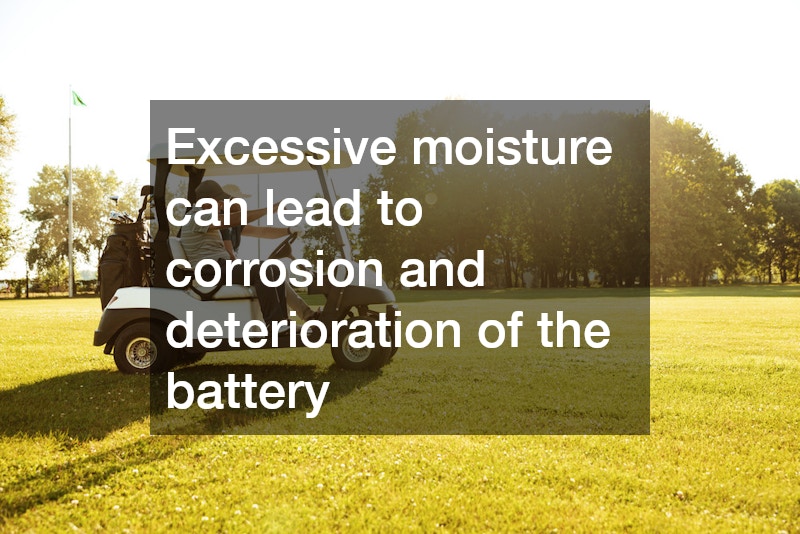
It’s crucial to understand how to tell when it’s the right time to visit the battery store for a golf cart battery replacement. Understanding when to seek out a new battery can extend the life of your golf cart and enhance your overall experience on the course. Whether you’re a casual golfer or a frequent player, the reliability of your golf cart heavily depends on the battery’s condition.
This guide will provide valuable insights, allowing you to maximize your golfing experience.
Signs Your Golf Cart Battery Needs Replacement
One of the primary signs to watch for is a significant decrease in power or speed. If you notice that your golf cart struggles to maintain its normal speed for extended periods, it may be time to consider a replacement. Additionally, if the cart takes longer to charge or loses its charge rapidly after being fully charged, this can also be indicative of battery health issues.
Another crucial sign is physical damage or deformation of the battery. When inspecting the battery, look for signs of leaking, swelling, or corrosion on the terminals. Such physical symptoms can compromise the battery’s performance and may even pose a safety risk. Furthermore, if you observe any unusual noises or smells during charging, it’s advisable to stop using the battery immediately and seek professional advice.
Lastly, if you’re frequently on the golf course and find that your battery requires continuous maintenance or has become unreliable, seeking a replacement could save you time and frustration. Regularly monitoring your golf cart battery’s performance is key. Understanding these signs ensures you’re not left stranded on the course when you least expect it.
How Often to Replace Your Golf Cart Battery
Generally, golf cart batteries have a lifespan of approximately four to six years, depending on usage and maintenance. Frequent use and inadequate maintenance can reduce this lifespan, making it essential to assess the battery condition regularly. Keeping a calendar or log of battery service can help track its longevity.
It’s also worth noting that different battery types may have varying lifespans. For instance, lead-acid batteries typically have a shorter lifespan compared to lithium-ion batteries. Understanding which type of battery you’re using can help inform your replacement schedule. It’s essential to replace the battery before it completely deteriorates to ensure consistent performance.
Moreover, seasonal usage can impact how often you should replace the battery. Golfers who play year-round may need to replace their batteries more frequently than those who only play seasonally. Keeping records of your golf cart’s usage can provide insights into battery wear and help determine the optimal time for replacements.
The Impact of Weather on Golf Cart Battery Life
Extreme temperatures, whether hot or cold, can significantly impact battery efficiency. High temperatures may cause the battery to overheat, leading to decreased performance and a shorter lifespan. Conversely, cold weather can lead to increased resistance, inhibiting the battery’s ability to deliver adequate power.
Humidity and moisture levels are also critical factors. Excessive moisture can lead to corrosion and deterioration of the battery terminals, which can result in malfunction or battery failure. Proper storage, especially in climates with severe weather conditions, is crucial. Utilizing a battery cover or storing the cart in a controlled environment can mitigate these risks.
Additionally, understanding local weather patterns can help you make informed decisions regarding battery maintenance and replacements. Seasonal changes can create fluctuations in battery performance that should not be overlooked. Regular inspections during weather changes can help prolong the battery’s life and ensure reliable performance throughout the year.
Maintenance Tips to Prolong Golf Cart Battery Life
Firstly, regular cleaning of battery terminals can significantly extend their life. Dirt, grime, and corrosion can hinder the battery’s ability to function. Using a mixture of baking soda and water can effectively clean the terminals and improve connectivity.
Secondly, ensure that the electrolyte levels are maintained adequately. For lead-acid batteries, it’s crucial to check the water levels regularly and refill them with distilled water as necessary. Keeping the electrolyte within recommended levels prevents damage and performance issues. Failing to do so can lead to irreversible battery damage.
Lastly, practice proper charging habits. Avoid overcharging the battery, which can lead to overheating and damage. Investing in a smart charger that automatically adjusts the charge based on the battery’s needs can be an effective way to prolong battery life. Consistent and proper maintenance reduces the frequency of battery replacements and helps maintain optimal performance on the course.
Choosing the Right Type of Golf Cart Battery
The two most common types are lead-acid and lithium-ion batteries, each with unique benefits and limitations. Lead-acid batteries are generally more affordable but may require more maintenance. They are reliable and have been the industry standard for decades.
Lithium-ion batteries, while more expensive, offer several advantages, such as longer life, reduced weight, and greater efficiency. They require less maintenance compared to lead-acid batteries and can provide more consistent power. Choosing between these batteries often comes down to your budget and how frequently you use your golf cart.
Additionally, considering the power capacity and voltage requirements of your golf cart is essential. Different models may operate optimally with specific battery configurations. Consulting your golf cart’s manual or speaking to a battery store expert can help you make an informed decision that meets your golfing needs.
Being aware of the signs for replacement, maintenance practices, and appropriate timing can help ensure your golf cart remains in top working condition. By understanding these key factors, you can enjoy a smoother ride on the course and maximize the lifespan of your golf cart battery. Keeping track of your battery’s performance and adhering to best practices will not only enhance your golfing experience but also improve the safety and reliability of your golf cart overall.




